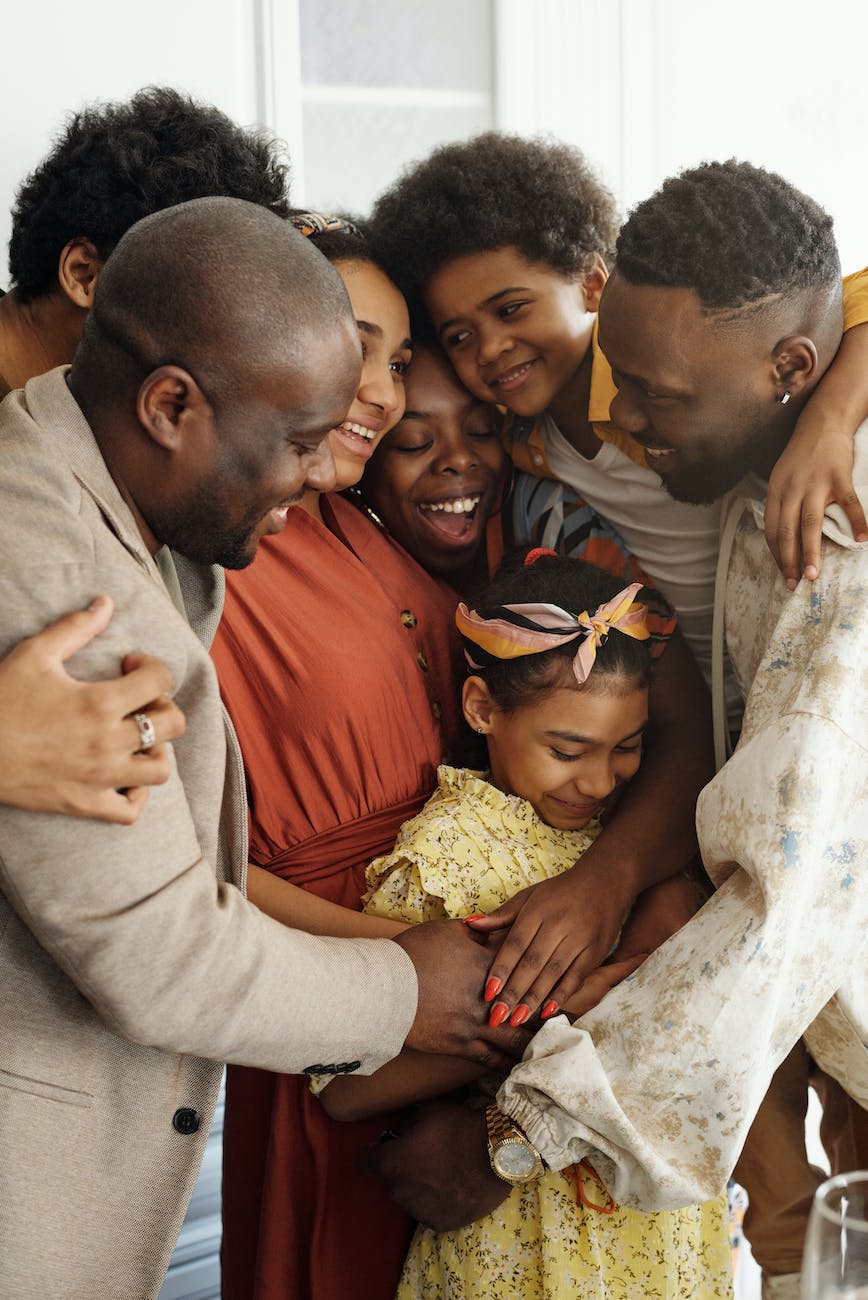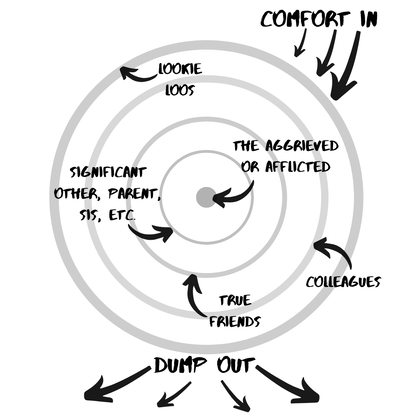I use the “Ring Theory” when helping and supporting individuals in crisis, feeling ill, or at the end of life. The concept was introduced by Susan Silk and Barry Goldman in an article titled “How Not to Say the Wrong Thing” published in the Los Angeles Times in 2013.
The Rings in the Theory
This approach helps maintain a supportive and caring environment for the person at the center of our care while preventing additional emotional burdens on them from those in closer proximity. It fosters a network of support that acknowledges the varying degrees of impact people may have in a given situation.
The Center Ring
This represents the person directly affected by the crisis or difficulty. They are at the center of our care and the center of the ring.
The Next Ring Out
This ring consists of close loved ones and friends of the person at the center. They are the next most affected by the situation.
The Third Ring
The third ring includes friends and extended family members who are not as close to the individual at the center but are still affected by the situation.
Outer Rings
The subsequent rings extend to acquaintances, coworkers, and so on, representing people who are progressively less directly affected by the situation.

How Does The Ring Theory Work?
The key principle of the Ring Theory is “comfort in, dump out” and applied to the idea that support and comfort should flow inward toward the person at the center of the crisis, and complaints, venting, or emotional struggles should be expressed outward to rings that are further removed from the center.
In other words:
Comfort In (Inward)
If you are in a closer ring to the person at the center, you provide support, empathy, and comfort to them. You listen, offer assistance, and avoid burdening them with your own emotional struggles.
Dump Out (Outward)
If you are in an outer ring, you seek support from people in rings further out than yours. You avoid expressing complaints, frustrations, or emotional challenges to those who are more directly affected by the crisis.
My Experience with the Ring Theory
I attend regular group meetings, like Death Cafes, where participants discuss various aspects of death and dying. Group members come from all walks of life and range from young to old. They have diverse belief systems and backgrounds. Therefore it helps to keep an open mind.
At these meetings, I normally stay quiet and listen. At our most recent gathering, the subject was dying loved ones.
A woman we’ll call Emily talked about a dear friend dealing with terminal cancer. This friend had been undergoing treatment, but the cancer had metastasized. He believed his quality of life was suffering. Therefore, he’d made the difficult decision to stop treatment.
Like so many cancer patients, he was literally sick of chemotherapy and wanted to enjoy whatever remaining time he had left.
Emily was mad at her friend for making this decision. She wanted to stop visiting because she was so angry. Emily didn’t know what to do.
A few participants encouraged her to visit the friend and reveal that anger. My eyes grew wide as they talked about how Emily “owed it to her friend” to directly communicate her anger and disappointment. Someone even told Emily that it wasn’t all about the sick person.
At that point, I’d heard enough.
It is the height of self-importance to believe that a friend’s dying experience should be about us. That it should be about anyone other than the person dying. The idea that we’d send Emily from our meeting believing this was a bit too much to take.
Comfort In, Dump Out
I gently said the following.
“Emily, I encourage you to own these feelings. If you have a support system filled with friends, family, or even a professional therapist, talk to them about what you’re feeling. Talk to us. It’s good to explore these emotions. You might even want to write them down in a journal.
But to go into a room where someone is actively dying and unload your anger on them is incredibly cruel. People at the end of life are dealing with a lot. They’re trying to manage their own grieving process.
They will soon let go of everything they know and everyone they love. We must not ask them to take on extra burdens and manage their loved ones’ issues at the same time.
This is, most certainly, about your friend. It is not about you.”
I took a deep breath and said no more for the rest of the meeting.
Another participant talked about the ring theory. I’d never heard of this before, but it brilliantly encapsulates what we all need to remember.

“Kvetching Order.”
The leading guideline with the ring theory, comfort In and dump out, can also be called the “Kvetching Order.”
When Susan Silk coined this theory and idea, she said the person in the center, the person going through it, can vent because it’s their right.
“That’s the one payoff for being in the center ring.”
Like Emily, those in outer rings can also vent. However, they are only allowed to unload with people in rings past their own. For example, a significant other would “dump out” their negative emotions to friends or colleagues.
Unloading on people within your ring or the person who is suffering doesn’t help them or anyone else.
Shine a Light Elsewhere
We live in a society that encourages self-importance. We post, tweet, and write about how world views and cultural events affect us. We’re preoccupied with what we think. About everything.
It’s our world, we’re made to believe. Other people are just living in it.
Some take that to an extreme. They view even the experiences of others through their own lens and particular point of view.
It’s insane.
For example, imagine you’re about to endure serious surgery. Something you’re feeling nervous about it. How would you feel if your partner told you, in detail, how frightened they were that you might die? Imagine you’re now required to comfort someone else rather than be comforted.
Might not friends or therapists be a better audience for your partner, rather than you, at that point?
That’s what Silk meant by “dump out.”
Good advice exists to help people figure out what to say and what not to say when someone is going through a tough time. Add the ring theory illustration to that list.
If you know a person experiencing illness or trauma, you have such an important role to play – that of a supportive loved one. Embrace it. And embrace the person who needs it.
Then save your complaints for other circles.
Contact Me
If you need support with the ring theory or anything else at the end of life, contact me at Anitya Doula Services today.



3 thoughts on “Don’t Unload on the Dying – Use the Ring Theory”